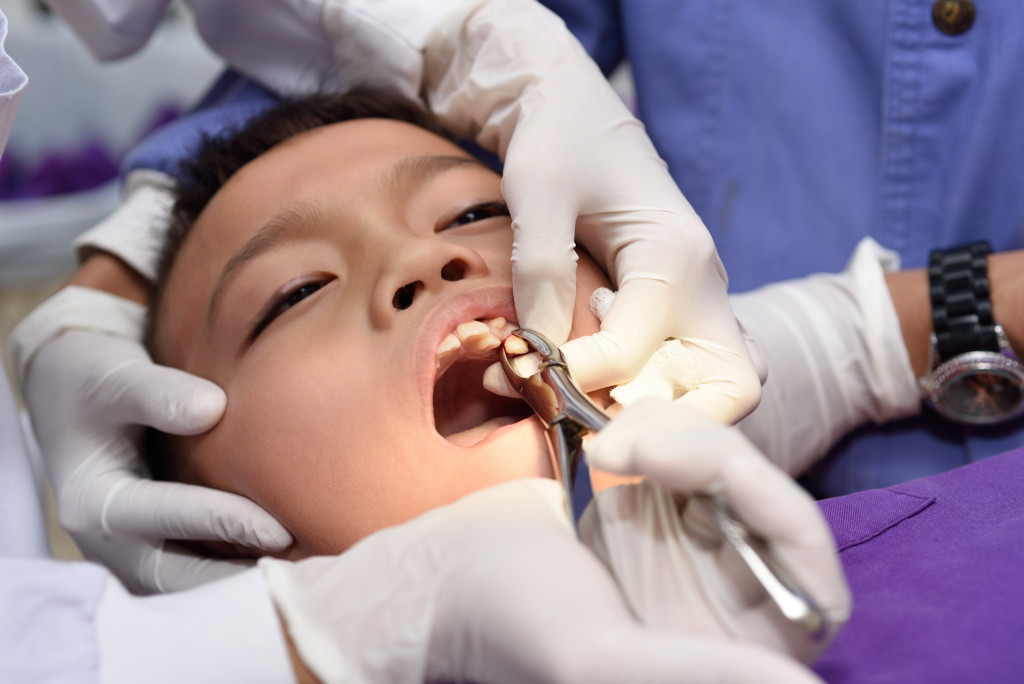As a mother, you want nothing more than to keep your child healthy and safe. But sometimes, even with the best intentions, children can still suffer serious health problems. Periodontal disease is one of these problems, and mothers need to be aware of the signs and symptoms to get their children treatment as early as possible.
What is Periodontal Disease?
Periodontal disease is a severe infection of the gums and tissues supporting teeth. If left untreated, it can lead to tooth loss. Periodontal disease is caused by plaque, a sticky film of bacteria that forms on teeth. If plaque is not removed, it turns into tartar (calculus), which is even more challenging to remove. Tartar can irritate the gums, making them red, swollen, and tender. This can lead to gingivitis, the early stage of periodontal disease.
If gingivitis is not treated, it can progress to periodontitis, a more severe form of the disease. Periodontitis can cause the gums to pull away from the teeth, forming pockets (spaces) that become infected. The bones and tissues that support the teeth can also be damaged.
Signs and Symptoms
The early stages of periodontal disease are often hard to spot, which is why mothers need to be aware of the signs and symptoms. Gingivitis is the earliest stage of periodontal disease and usually only causes mild symptoms. These can include:
Swollen Gums
You might notice that your child’s gums are swollen, tender, or red. They might also bleed when brushed. If you see these symptoms, take your child to the dentist as soon as possible.
Receding Gums
As periodontal disease progresses, the gums can start to pull away from the teeth, causing them to appear longer than normal. This is known as receding gums. You might also notice that your child’s teeth look longer than they used to.
Bad Breath
Usually, bad breath is nothing to worry about. But if your child has persistent bad breath, it could be a sign of periodontal disease. Not brushing and flossing regularly can cause plaque and tartar to build up, leading to bad breath.
Loose Teeth
As the periodontal disease gets worse, the bones and tissues supporting teeth can start to break down. This can make teeth feel loose or even fall out. If you notice that your child’s teeth are loose, take them to the dentist immediately.

Changes in Bite
If your child’s teeth start to change position or their bite changes, it could be a sign of periodontal disease. This is because the disease can cause the teeth to loosen and shift. While this might not seem like a big deal, it can lead to serious eating and speaking problems.
What Is the Treatment for Periodontal Disease?
If you think your child might have periodontal disease, the best thing to do is take them to the dentist. Only a dentist can diagnose the disease and recommend the best course of treatment. Treatment depends on how severe the disease is.
Mild Gingivitis
When caught early, gingivitis can be treated with a professional cleaning and improved oral hygiene at home. This means regular brushing, flossing, and using an antibacterial mouthwash.
Moderate to Severe Periodontitis
In more advanced cases of periodontitis, deeper cleanings (scaling and root planing) might be necessary. This involves numbing the gums and removing tartar below the gumline. In some cases, surgery might be necessary to restore damaged tissue.
What If My Child Loses a Tooth?
If your child loses a tooth due to periodontal disease, there are options to replace it. Dental implants are the best option for tooth replacement because they look and feel like natural teeth. With proper care, they can last a lifetime.
You can also prevent periodontal disease by practicing good oral hygiene habits at home and regularly taking your child to the dentist. These habits include:
- Brushing Twice a Day: The best way to prevent periodontal disease is to brush twice a day with toothpaste that contains fluoride. Fluoride helps to strengthen the teeth and prevent cavities.
- Flossing Daily: Flossing is just as important as brushing. It helps to remove plaque and tartar from between the teeth where a toothbrush can’t reach.
- Eating a Healthy Diet: A healthy diet is important for overall health, including oral health. Eating plenty of fruits, vegetables, and whole grains can help to keep teeth and gums healthy.
- Visiting the Dentist Regularly: The best way to prevent periodontal disease is to visit the dentist regularly. Dentists can clean teeth and identify any problems early on. They can also provide tips for good oral hygiene habits.
There you go! Now you know the signs and symptoms of periodontal disease in children and the best ways to prevent it. If you think your child might have the disease, don’t hesitate to take them to the dentist. Early treatment is key to preventing any long-term damage.




